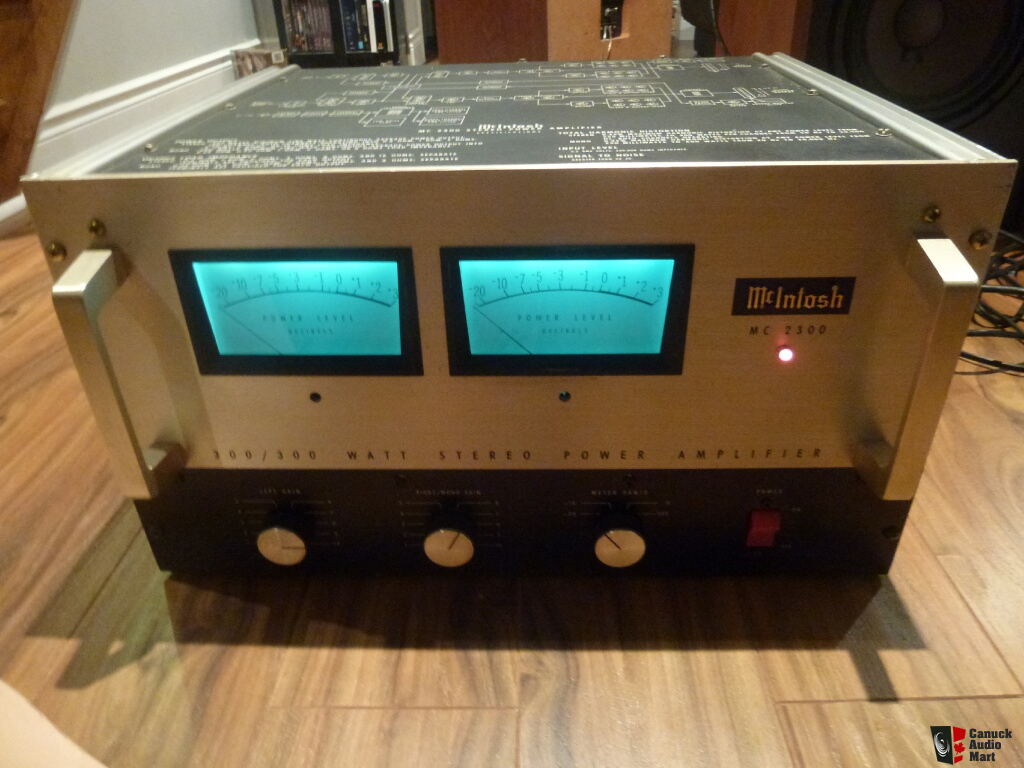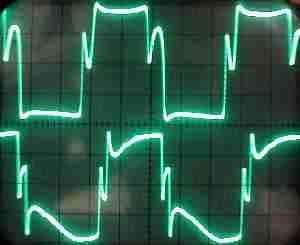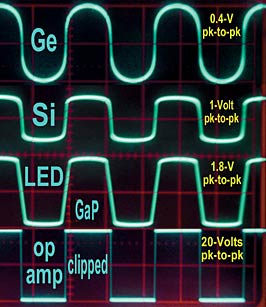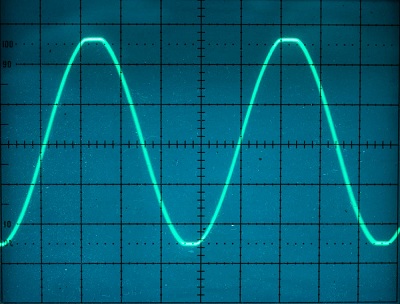The Kemper then raises an interesting situation; if the characteristics of the modelled amp are near-identical to the original, then given a clean SS amp with enough headroom, would the subjective loudness of the Kemper not be the same?
Ad Widget
Collapse
Announcement
Collapse
No announcement yet.
Tube vs solid state power amp volumes and speaker load
Collapse
X
-
I think you answered your own questionOriginally posted by Mick Bailey View PostThe Kemper then raises an interesting situation; if the characteristics of the modelled amp are near-identical to the original, then given a clean SS amp with enough headroom, would the subjective loudness of the Kemper not be the same?
"a clean SS amp with enough headroom" in other words a higher power output, right?Experience is something you get, just after you really needed it.
Comment
-
A 1973 article that has not a lot to do with distorting guitars. Also transistor amps were really not at their best in '73. To make them shine we may have to go back to 1967.Originally posted by nickb View PostIn the AES journal, May 1973 article titled "Tubes versus Transistors: Is There An Audible Difference" concluded:
“Vacuum-tube amplifiers differ from transistor and operational amplifiers because they can be operated in the overload region without adding objectionable distortion. The combination of the slow rising edge and the open harmonic structure of the overload characteristics form an almost ideal sound- recording compressor. Within the 15-20 dB "safe" overload range, the electrical output of the tube amplifier increases by only 2-4 dB, acting like a limiter. However, since the edge is increasing within this range, the subjective loudness remains uncompressed to the ear. This effect causes tube-amplified signals to have a high apparent level, which is not indicated on a volume indicator (VU meter). Tubes sound louder and have a better signal-to-noise ratio because of this extra subjective headroom that transistor amplifiers do not have. Tubes get punch from their naturally brassy overload characteristics. Since the loud signals can be recorded at higher levels, the softer signals are also louder, so they are not lost in tape hiss and they effectively give the tube sound greater clarity. The feeling of more bass response is directly related to the strong second and third harmonic components, which reinforce the "natural" bass with "synthetic" bass [5]. In the context of a limited dynamic range system like the phonograph, recordings made with vacuum-tube pre-amplifiers will have more apparent level and a greater signal to system noise ratio than recordings made with transistors or operational amplifiers.”
Popular Electronics December 1967
No high powered opamp here. You could only go farther back the evolutionary scale by having the stages capacitor or transformer coupled. So what does this (these) designs give us that later day amps (actually I think this bigger brother sibling also could be lumped in) do not? Low gain, no excess to be scrubbed off with NFB. Also no low distortion until you hit the supply rails, distortion rises as output goes up. And speaking of power supplies, the l'l tiger was not expected to have a stout PS. Good enough for reasonable listening with musical peaks. Not built for producing sine waves. And the good thing about the little amp is it sounded great cranked through a couple of Celestion speakers (boy I miss those, sad story). Yes the B+ dropped by more than 10% when we were torturing the amp. With a heavy fisted drummer and a Twin reverb to contend with the amp held its own, not cleanly mind you.
So are we talking apples to oranges when comparing tube to SS? Is the device the culprit or is it the circuit? Would a non-NFB amp that has a saggy PS sound better than a chip-amp with output protection circuitry? Oh yeah, rebuilt the tiger a few times after the output melted, think the transistor were only rated for 2-3A. Should have looked up a beefier transistor but these were cheap enough to swap out every few weeks.
Would like to build a few amps to test out the theory, a tube and a couple of SS amps with the same wattage rating and similar PS characteristics. Send the signal through whatever circuit deemed acceptable (tube or SS) and give the same signal to the output stages. A pair of speakers and mic them to be fed into headphones. Should be easy enough to tell what is happening to the sound as the signal is turned up. Well that is the theory, maybe one day I will get around to seeing if has any validity or not.
Comment
-
Class C-- that is a good way to look at it. With hard clipping, I do see increased crossover distortion, but not those spikes, just the flat region near 0 volts.Originally posted by pdf64 View PostMy guess is that extreme overdrive pushes the power tubes effectively into class C, so the spikes are crossover artifact.
Due to the combined effects on the operating point of bias shift at the control grids, 'squish' as the cathode voltage rises, and 'sag' as the screen grid HT voltage drops.
I think that your fixed bias and 100k control grid stoppers may act to reduce / eliminate those effects.
The 100K resistors do not make much difference, so I reduced them to the original 8K. My cathodyne phase splitter running off positive and negative supplies has about as much output capability as a normal stage of gain, and so it does not suffer from bad distortion like the normal kind with the grid connected the plate of the previous stage.
Comment
-
Well, certainly transistor guitar amps not at their best, that's true. And cheap stereo amps. Definitely not the case for well engineered top line gear, some sounded terrific & still sought after. You wouldn't kick one of these out of the listening room, studio or stage. In fact if you tried, you'd probably break your foot.Originally posted by printer2 View PostA 1973 article that has not a lot to do with distorting guitars. Also transistor amps were really not at their best in '73.
 This isn't the future I signed up for.
This isn't the future I signed up for.
Comment
-
Measuring output power at onset of clipping is fine for hifi. But no one stops turning up their guitar amp after the onset of clipping. And if a "50 watt" amp starts clipping at say 25 watts, whatever it outs out fully cranked will not be a pure sine wave, but it sure as hell can blow a 25 watt speaker. Watts are watts if you are comparing watts, but we are comparing amplifiers, not watts.
If one amp is louder than the other, of course its speaker is getting more power. As was said, a "50 watt" tube amp can put more power into a speaker than can a "50 watt" SS amp. Is it "fair"? Is it a "legitimate" way to measure output power? Who knows or cares?Education is what you're left with after you have forgotten what you have learned.
Comment
-
You wouldn't want an amp being driven by a Kemper to clip. If it did, then the purpose would be lost. So the comparison needs to be made within the clipping limits of either scenario identified by the OP. He says the 90W SS output is half volume compared to the Marshall and this suggests to me something like 1/10 of the power being delivered by the SS setup. The problem here is perception of loudness and without taking measurements it's difficult to evaluate subjectively.
Comment
-
Thank you for that very informative post, I read it twice and it helped me a lot! <3Originally posted by J M Fahey View PostThere's many possible explanations here, only bench testing will tell which one applies.
1) Preamp/emulator might not be driving power amp to full power, because signal levels do not match, as Enzo suggested.
Which sounds plausible to me.
I have tested SS and tube amps side by side countless times, clipping tube amps sound *somewhat* louder than same nominal power SS ones, will comment on that later, but it's not that big a difference.
Driving same speakers, a 100W SS amp easily matches a 50W tube one, yet you say that a 90W one (practically same as 100W) is WAY weaker than the Marshall, WAY means at least a 6dB difference and that's definitely not right ... unless the SS one is NOT driven anywhere near clipping.
Once SS amps clip, they don't lose power by any means, but the ruler flat waveform tops kill definition and harmonics, sound becomes muddy, instrument loses character, "all sound the same" , and that will be perceived as: "they don't cut in the mix or onstage" .but not that they have less *volume* , just flatter boring sound.
I'll show some clipping waveforms so you see what I am talking about
Marshall 18W, famous for its biting aggressive sound, so much so that some (mistakenly) add "buzz caps" to tame it; notice the sharp peaks, they are heard very well, believe me:

a standard tube amp, where one tube is weaker than the other so it clips earlier and has trouble reaching the same peak as the good one, not shown but I guess the PI is also clipping, we have the transformer which is a bandpass filter changing shape, the PI>power tube coupling cap also changes waveform shape, anything changing waveform away from a sinewave will add harmonics and our ear may hear them better:

here you see different clipping methods, used in SS amps and pedals, notice that NONE of them looks or does the same as a tube amp clipping , even if some pedals using them call themselves Tube Screamer or Hottubes
The last one, showing an Op Amp clipping, is the exact same square, flat top waveform of an SS power amp clipping ... for the very good reason that a standard SS power amp is just a "large" Op Amp, large enough to drive speakers

other SS clipping waveforms, one barely clipping , the other somewhat more, in any case different from tube ones:


some SS amps add special feedback to become "constant current" or "high impedance" outputs, emulating *one* tube characteristic (they still miss many others), in that case the square wave reacts to the speaker voice coil inductance and creates a front edge peak which adds some bite, look at the bottom waveform, and look for a similar peak at the "18W" clipping:

our friend Loudthud has generously posted tons of scope capture waveforms, very enlightening.
I had a little break through last night at rehearsal - I simply used the "Monitor out" as suggested and it increased the signal enough to be beyond useable even with our hard-hitting drummer. Also I updated to newer firmware and really made sure signal out was at "0dB".
I am so thrilled to start recording my pedals and amps to be able to start experimenting with this magic box in my band now! Thanks for all the help.“Women are meant to be loved, not to be understood.”
― Oscar Wilde
Comment
-
A 50W tube amp can put out more power than a SS amp is not a given. When the amp, tube or SS, runs out of voltage the only room to grow is sideways rather than up. A SS amp can produce square waves just as a tube amp can. And the power would be well in excess of its sine wave output. But the tube amp does not automatically put out more than a SS amp. Take a 5E3 for example. A spongy PS that has barely enough juice for the job but which produces a nice sag effect because of it. A SS amp of 14W could put out more than the 5E3 if it has a stiffer PS. As far as the difference between what an amp is rated for and what a speaker is rated for, it seems all watts are not created equal.Originally posted by Enzo View PostMeasuring output power at onset of clipping is fine for hifi. But no one stops turning up their guitar amp after the onset of clipping. And if a "50 watt" amp starts clipping at say 25 watts, whatever it outs out fully cranked will not be a pure sine wave, but it sure as hell can blow a 25 watt speaker. Watts are watts if you are comparing watts, but we are comparing amplifiers, not watts.
If one amp is louder than the other, of course its speaker is getting more power. As was said, a "50 watt" tube amp can put more power into a speaker than can a "50 watt" SS amp. Is it "fair"? Is it a "legitimate" way to measure output power? Who knows or cares?
Comment
-
Not the definitive truth by far , but some relevant points:
1)RMS does not paint the full picture.But the louder one really ought to have a higher rms ac voltage across the speaker.
Compare 2 waveforms (I am not even speaking about amp type):
a) 20V RMS 28V peak sinewave into 8 ohms: 50W RMS
Now you overdrive it into a 50% duty cycle squarewave: 100W RMS
You will burn a 50/70W rated speaker.
Sound will be as penetrating as a plain squarewave: reedy, boring.
If you killed "interesting guitar harmonics" you end up losing points.
b) this other amp can also produce a 50W sinewave but when heavily overdriven it can produce a 40V peak "squarewave", 25% duty cycle (instead of standard 50%): still 50W RMS, it will NOT burn the same speakers, yet the narrow pulse, annoying buzzy waveform has tons of harmonics and in a poor acoustics hall can be perceived by human ears twice as far as the smoother squarewave.
(A) describes a typical SS amp or a high NFB, Hi Fi type tube amp.
(B) describes a typical, little or no NFB tube guitar amp.
Where does the narrower pulse/lower duty cycle come from?
The SS or "polite" tube amps are basically class B (AB only means they are A for a very small percentage of the duty cycle) or worse: full A which is even more polite; while heavily overdriven Tube guitar amps rectify drive signal, which shifts bias way more negative into .... class C (it was mentioned above) which shows the buzzy annoying penetrating sound I mentioned.
The exaggerated crossover spikes are easily visible in no-NFB M18W and in general appear when biasing most any tube amp at high power (which is a mistake), at least as waveform "kink" around crossover point.
Dialing it down is a mistake, in my book correct is to bias extremely cold so crossover is visible at low power (a couple watts) , then smoothly lowering bias voltage until kink is almost ironed out (still at low power) and leave it there, that's the point of biasing crossover out, don't overdo it.
If waveform kink appears at higher power, so be it, it's part of tube sound.
Blindly biasing to 70% usually erases it for good, of course such "Techs" never scope their amps.
FWIW , Peavey (and a couple others, Pritchard definitely did) , introduce such kink on purpose, as part of the Transtube idea ... with which I agree in general.
to be continued Juan Manuel Fahey
Juan Manuel Fahey
Comment
-
The solid state power amp runs out of voltage at the power rails. By the nature of a tube amp, the output transformer allows the plate voltages to go beyond the power supply voltage.Education is what you're left with after you have forgotten what you have learned.
Comment
-
Also bear in mind that tube amps generally have significant output impedance, which allows their output voltage to better track speaker impedance, which is above its nominal impedance over much of the applicable frequency band.
Whereas solid state amps tend to be configured to hit the rails at a particular output voltage, which will tend to be largely irrespective of the load impedance rising above nominal.
So viewed from that perspective, tube watts are louder!My band:- http://www.youtube.com/user/RedwingBand
Comment
-
In theory the OT should allow higher voltages but if the current is not there, the PS is sagging, then you are still limited by the PS. When I scope a tube amp I see them hitting the rail as a SS amp, the above pictures shows the same. The frequency content may be altered, as shown with the tilted tops of the square wave but in the end the tubes can only put out what the PS can give.Originally posted by pdf64 View PostAlso bear in mind that tube amps generally have significant output impedance, which allows their output voltage to better track speaker impedance, which is above its nominal impedance over much of the applicable frequency band.
Whereas solid state amps tend to be configured to hit the rails at a particular output voltage, which will tend to be largely irrespective of the load impedance rising above nominal.
So viewed from that perspective, tube watts are louder!
Comment
-
The key thing is that the current doesn't need to be there, as, over the frequency range of interest, speaker impedance is predominately greater than nominal. The high output impedance of a tube amp will probably allow better power output, into load impedance values greater than nominal, than the minimal output impedance of a regular solid state amp.Originally posted by printer2 View PostIn theory the OT should allow higher voltages but if the current is not there, the PS is sagging, then you are still limited by the PS
Yes, but that's into a resistive load of the rated nominal value.Originally posted by printer2 View PostWhen I scope a tube amp I see them hitting the rail as a SS amp, the above pictures shows the same
How about if you double it, eg as at treble resonance; which gives more then, tube or solid state? How about x10 nominal, eg at bass resonance?
The thing is that tubes are lossy, so a tube amp HT power supply needs to have more capability than a similarly rated solid state amp.Originally posted by printer2 View Postin the end the tubes can only put out what the PS can give.
Things would be evened out if the solid state amp was configured to have a similar (full load) output impedance as a regular tube amp, but then its power supply would need to have higher voltage rails and it would be less efficient.Last edited by pdf64; 04-30-2016, 09:48 PM.My band:- http://www.youtube.com/user/RedwingBand
Comment
-
Comment